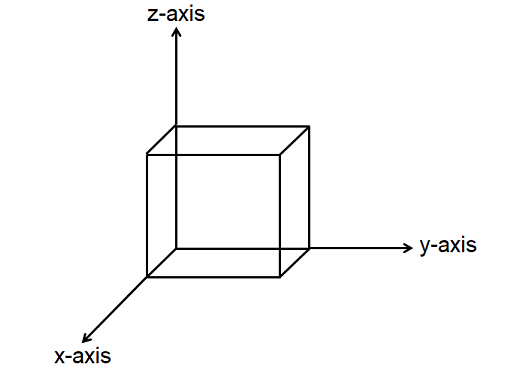MATH DICTIONARY Z
Zero :
Originally, one of the integers in the real number system that is smaller than 1 but greater than -1. The only real number that is neither positive nor negative and also it indicates no quantity, size, or magnitude.
Zero Property of Addition :
The property that states that the sum of a number and 0 is that same number.
k + 0 = k
The above property is true for all real values of k.
This property is sometimes called the identity property of addition.
Zero Property of Multiplication :
The property that states that the product of any number and 0 is always 0
k × 0 = 0
The above property is true for all real values of k.
Zero Index :
Any non zero number to the power of zero is equal to one.
Example 1 :
50 = 1
80 = 1
Zero - Importance :
The importance of the number zero goes beyond the real numbers because it serves as the additive identity also for the complex numbers: If z is any complex number, then
z + 0 = z
Also, zero could be considered as the ”zero function” that for all values of the variable x equals to zero. In this interpretation zero is also the additive identity in the set of all functions.
Zero Factor Property :
Also called zero product property. If for two numbers (real or complex) a and b,
a · b = 0,
then either a = 0 or b = 0 or both are zero.
This property of numbers is one of the most important tools in solving algebraic or trigonometric equations.
Example 2 :
x3 + 3x2 - 4x - 12 = 0
Factoring the polynomial on the left side by grouping, we get the equation
(x - 2)(x + 2)(x + 3) = 0
which by the zero factor property results in three linear equations
x - 2 = 0, x + 2 = 0, x + 3 = 0
with the solutions
x = 2, x = -2, x = -3
Example 3 :
sin2x - cosx = 0
Using the double angle formula for the sine function and factoring we get cos
x(2sinx - 1) = 0
and again, by the zero factor property this results in two simpler equations
cosx = 0
sinx = 1/2
The solutions on the base interval [0, 2π) are :
x = π/2, 3π/2, π/6, 5π/6
The zero factor property is not true for other mathematical object, for example for matrices : If the product A·B of two matrices is the zero matrix then none of the matrices A or B are necessarily the zero matrices themselves.
Zero Matrix :
A matrix of arbitrary size mxn such
that all of the entries are zeros. Example :
This matrix is the additive identity in the set of all matrices of the same size: Adding this matrix to any other matrix does not change it.
Zeros of the Equation :
Also called roots or solutions of the equation. Any real (or complex) number that substituted into the equation results in numeric identity. The number x = 2 is the zero of the equation
x2 - x - 2 = 0
because substituting that value into the left side of the equation results in numeric identity
0 = 0
Every polynomial equation of degree n ≥ 1 has exactly n zeros, if we accept complex zeros and count them according to multiplicity. See also Fundamental Theorem of Algebra.
Zero Subspace :
The subspace of a vector space that consists of a single zero vector x = 0. Zero subspace is the part of any vector space.
Zero Transformation :
The (linear) transformation between any vector spaces V and W such that T(u) = 0 for any vector u ∈ V.
Zero Vector :
The vector that has all zero components :
0 = (0, 0, · · · , 0)
This vector plays the role of the additive unity for any vector space :
x + 0 = 0 + x = x
for any vector x of the vector space.
Z-Axis :
In three-dimensional Cartesian coordinate system, in addition to x- and y-axes, there is also the z-axis, that is perpendicular to the plane formed by these two axes.

Z-Coordinate :
Any point in the space has three orthogonal projections, corresponding to three axes. The projection onto the z-axis gives the z-coordinate of the point that is always written on the third position : For the point (1, 2 , 3) the third entry 3 is the z-coordinate.
Z-Score :
Suppose x is a random variable and assume x̄ is its mean and s its standard deviation. The quantity
z = (x - x̄)/s
is the z-score (or standardized value) of the variable x. If the variable x belongs to a normal distribution with the mean x̄ and standard deviation s, then the variable z (the z-score) belongs to standard normal distribution: its mean is zero and standard deviation is 1. The z-score measures the distance of the value x from the mean in terms of standard deviation units. z-scores are also sometimes called z statistic.
Kindly mail your feedback to v4formath@gmail.com
We always appreciate your feedback.
©All rights reserved. onlinemath4all.com
Recent Articles
-
Digital SAT Math Problems and Solutions (Part - 144)
Apr 14, 25 07:27 PM
Digital SAT Math Problems and Solutions (Part - 144) -
Quadratic Equation Problems with Solutions (Part - 1)
Apr 14, 25 11:33 AM
Quadratic Equation Problems with Solutions (Part - 1) -
Quadratic Equation Problems with Solutions (Part - 2)
Apr 14, 25 11:22 AM
Quadratic Equation Problems with Solutions (Part - 2)
